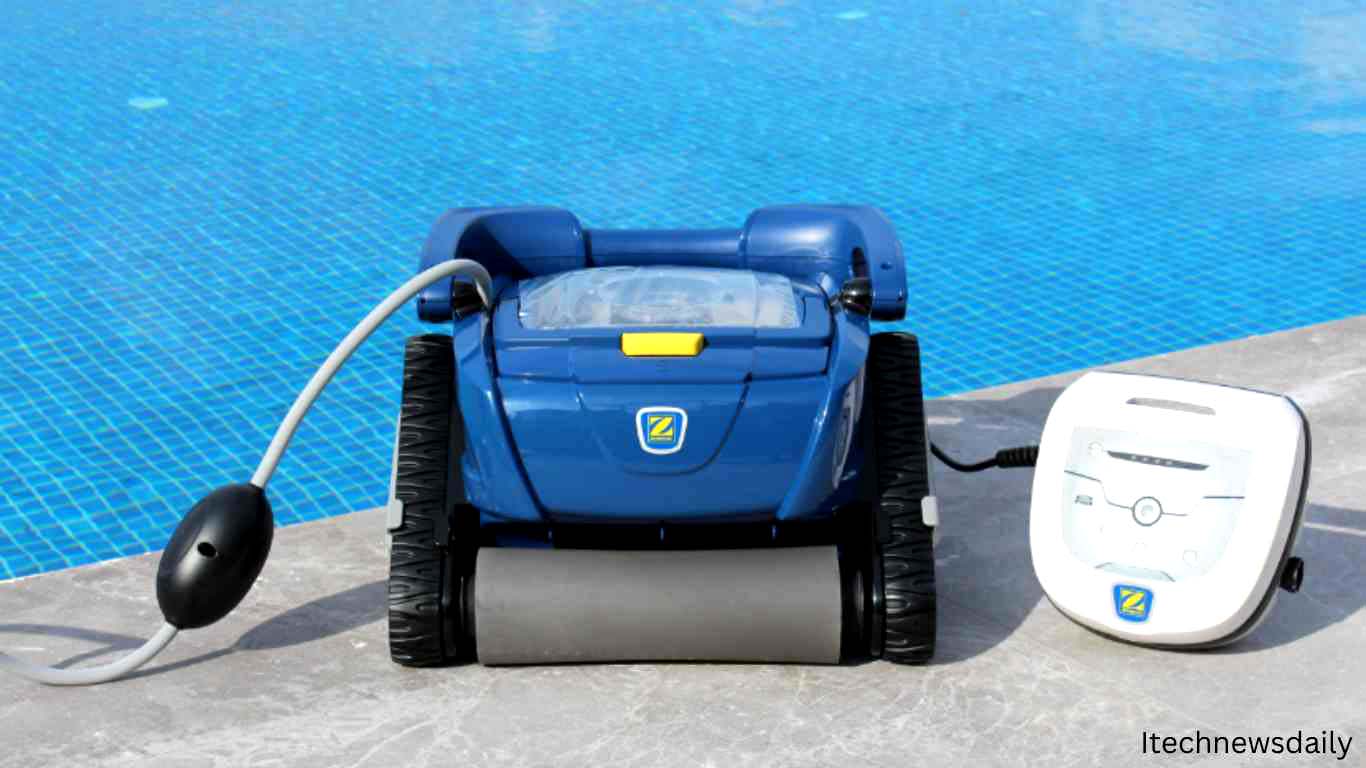
Robotic Swimming Pool Cleaner
Swimming pools are a hallmark of leisure and relaxation, offering a refreshing oasis on hot summer days and a focal point for gatherings and entertainment. However, the joy of owning a pool comes with the responsibility of maintenance, which often involves the tedious task of cleaning.
Fortunately, advancements in technology have ushered in a new era of convenience and efficiency with the emergence of robotic swimming pool cleaners. In this article, we explore the evolution, mechanics, benefits, limitations, and future prospects of robotic pool cleaners.
The Evolution of Pool Cleaning Technology
The history of pool cleaning dates back centuries, but the modern era of pool maintenance began in the mid-20th century with the advent of automated pool cleaning systems. Initially, pool cleaning involved manual brushing, skimming, and vacuuming, which demanded significant time and effort from pool owners. The introduction of suction-side and pressure-side pool cleaners in the 1960s provided some relief, but these systems still relied heavily on the pool’s filtration system and required frequent manual intervention.
The breakthrough came in the late 1970s with the invention of the first robotic pool cleaner. Unlike traditional pool cleaners, robotic models operated independently of the pool’s filtration system and were powered by electricity. These early robots featured basic navigation systems and limited cleaning capabilities but laid the foundation for future innovation.
Over the decades, advancements in robotics, artificial intelligence, and materials science have transformed robotic pool cleaners into sophisticated devices capable of efficiently cleaning pools of all shapes and sizes. Today, robotic pool cleaners incorporate state-of-the-art sensors, algorithms, and cleaning mechanisms to deliver superior performance and convenience to pool owners worldwide.
Mechanics of Robotic Pool Cleaners
Robotic pool cleaners consist of several key components that work together to ensure effective cleaning:
- Suction and Filtration: Robotic cleaners are equipped with powerful suction pumps that draw in debris from the pool’s surface, walls, and floor. The debris is then filtered through a fine mesh or cartridge filter, trapping particles of various sizes and leaving the water clean and clear.
- Brushing Mechanism: Most robotic pool cleaners feature rotating brushes or scrubbers that dislodge dirt, algae, and other contaminants from the pool’s surfaces. These brushes are typically made of durable materials such as rubber or PVC and are designed to agitate stubborn debris without damaging the pool’s finish.
- Navigation System: Advanced robotic cleaners employ sophisticated navigation algorithms to map out the pool’s dimensions and plan optimal cleaning routes. This allows the cleaner to cover the entire pool efficiently and avoid obstacles such as steps, ladders, and swim toys.
- Power Source: Robotic pool cleaners are powered by electricity and are connected to a low-voltage transformer or power supply. Some models are equipped with rechargeable batteries, allowing them to operate cordlessly for extended periods.
- Remote Control and Automation: Many robotic cleaners come with remote control units or smartphone apps that allow users to program cleaning schedules, adjust cleaning settings, and monitor the cleaner’s progress from anywhere.
Benefits of Robotic Pool Cleaners
The adoption of robotic pool cleaners has brought numerous benefits to pool owners, including:
- Time Savings: Robotic cleaners operate autonomously and can clean a pool more quickly and efficiently than traditional methods. This frees up valuable time for pool owners to enjoy their pool rather than spending hours cleaning it.
- Energy Efficiency: Unlike suction-side and pressure-side cleaners, which rely on the pool’s filtration system and circulation pump, robotic cleaners have their own onboard motors and filtration systems. This reduces strain on the pool’s equipment and can lead to energy savings over time.
- Improved Cleaning Performance: Robotic cleaners are designed to scrub, vacuum, and filter debris from all surfaces of the pool, including walls, floors, and waterline. This comprehensive cleaning ensures a sparkling clean pool that is free of algae, bacteria, and other contaminants.
- Reduced Chemical Usage: By keeping the pool water clean and balanced, robotic cleaners help reduce the need for harsh chemicals such as chlorine and algaecides. This not only improves water quality but also prolongs the life of the pool’s equipment and surfaces.
- Long-Term Cost Savings: While robotic pool cleaners represent a significant upfront investment, they can save money in the long run by reducing maintenance costs, extending the lifespan of pool equipment, and minimizing the need for professional cleaning services.
Limitations and Considerations
Despite their many advantages, robotic pool cleaners have some limitations and considerations that potential buyers should be aware of:
- Initial Cost: Robotic pool cleaners typically have higher upfront costs compared to suction-side and pressure-side cleaners. However, many users find that the time and labor savings justify the investment over time.
- Maintenance and Repairs: Like any mechanical device, robotic pool cleaners require regular maintenance to ensure optimal performance. This may include cleaning the filter cartridges, replacing worn brushes, and inspecting electrical connections. Additionally, repairs may be necessary in the event of mechanical failures or component malfunctions.
- Pool Compatibility: Not all robotic cleaners are suitable for every type of pool. Factors such as pool size, shape, surface material, and debris load should be considered when selecting a robotic cleaner. Some models may struggle to navigate irregularly shaped pools or effectively clean large amounts of debris.
- Storage and Handling: Robotic pool cleaners are bulky and may require ample storage space when not in use. Additionally, handling and maneuvering the cleaner in and out of the pool can be cumbersome, especially for individuals with limited mobility or strength.
Future Trends and Innovations
The future of robotic pool cleaners is bright, with manufacturers continuously pushing the boundaries of technology to deliver even greater efficiency, performance, and convenience. Some emerging trends and innovations in the field include:
- Artificial Intelligence and Machine Learning: Future robotic cleaners may leverage AI algorithms to learn and adapt to the unique characteristics of each pool, optimizing cleaning routes and strategies for maximum effectiveness.
- Wireless Connectivity and Smart Home Integration: Manufacturers are incorporating wireless connectivity features such as Wi-Fi and Bluetooth into robotic cleaners, enabling seamless integration with smart home ecosystems and mobile apps for remote monitoring and control.
- Environmental Sustainability: As awareness of environmental issues grows, there is increasing demand for eco-friendly pool cleaning solutions. Future robotic cleaners may incorporate sustainable materials, energy-efficient components, and water-saving technologies to minimize their environmental impact.
- Multi-Purpose Functionality: Some manufacturers are exploring the concept of multi-purpose robotic cleaners that can perform additional tasks beyond pool cleaning, such as surface skimming, water testing, and chemical dosing.
Conclusion
Robotic swimming pool cleaners have revolutionized the way pool owners maintain their pools, offering unparalleled convenience, efficiency, and performance. With advanced features such as powerful suction, intelligent navigation, and remote control capabilities, robotic cleaners have become indispensable tools for pool maintenance professionals and homeowners alike.
While they may require a significant upfront investment and periodic maintenance, the time and labor savings they provide make them a worthwhile investment for anyone looking to enjoy a clean and pristine pool year-round. As technology continues to evolve, the future promises even more innovative solutions to simplify and enhance the pool cleaning experience for generations to come.











